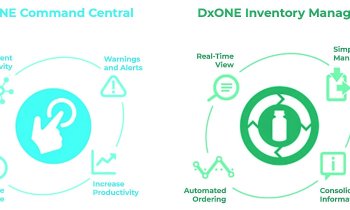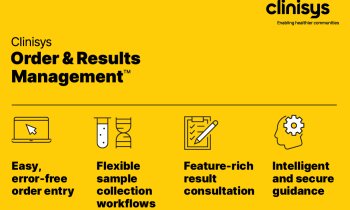Bladder
Effectiveness, safety and cost of fluorescence cystoscopy
Bladder cancer is associated with high recurrence rates, necessitating prolonged surveillance and repeated treatments. As a result, it is one of the most challenging and costly of all solid tumours to manage. Although most patients present at an early stage with non-muscle-invasive bladder cancer (NMIBC), between 13% and 61% will experience recurrence within 1 year of initial transurethral resection of the bladder (TURB).1 It is believed that many cases of recurrence may be due to incomplete initial resection caused by limited ability to visualise the whole extent of the tumour using the current standard, white-light cystoscopy (WLC). Improved detection and management are therefore urgently needed.

Fluorescence cystoscopy (FC) with photosensitive agents, such as hexaminolevulinate (HAL), has demonstrated enhanced ability to visualise malignant areas, including flat or multifocal lesions that are difficult to detect using WLC, thereby resulting in more complete resections and reduced recurrence rates.2,3 Many clinical trials, including registration trials, meta-analyses and systematic reviews confirm these benefits of HAL-FC as an adjunct to WLC in clinical practice.2,4–13 One meta-analysis of prospective trials involving a total of 1,345 patients showed that, in comparison with WLC, HAL-FC significantly improved tumour detection and significantly reduced recurrence rates at 12 months, independently of patient’s risk category and whether HAL was used at initial presentation or on recurrence.2 Furthermore, a retrospective analysis showed that HAL-FC can significantly improve recurrence-free survival and overall survival in patients undergoing TURB and subsequent radical cystectomy.14 The said benefits seem pronounced in high risk NMIBC15.
HAL-FC can also improve disease staging, resulting in more appropriate treatment selection, such as adjuvant chemo- or immunotherapy or early cystectomy.1 In a phase III study, 22% of patients with confirmed NMIBC had a change of treatment after HAL-FC compared with WLC (p<0.001).9
Use of FC in the diagnosis of bladder cancer is recommended by the European Association of Urology (EAU),15 the International Consultation on Urological Diseases (ICUD)16 and the National Institute for Health and Care Excellence (NICE).17 The 2015 EAU guidelines and the second ICUD-EAU report recommend FC to guide initial TURB and biopsy and to aid diagnosis of carcinoma in situ (CIS).15,16 ICUD-EAU guidelines also recommend FC for patients with positive urine cytology but negative WLC.16 Numerous expert groups have addressed best-practice implementation of HAL-FC into clinical management of patients with NMIBC (Table 1).18–20
In addition to improving patient outcomes, HAL-FC has been shown to realise both short- and long-term cost effectiveness, despite the initial cost of equipment.21–25 Results from a UK analysis suggest that, compared with WLC alone, adjunctive HAL-FC would be expected to result in 0.060 incremental quality-adjusted life years (QALYs) and a cost saving per patient of £391 (€516) due to fewer recurrences and recurrence-associated procedures.23 A German analysis reported cost savings with FC compared with WLC to be €168 per patient per year over a median follow up of 7.1 years.24 In an Italian analysis, use of HAL-FC improved the completeness of lesion resection and tumour staging, leading to a lower recurrence rate and fewer associated TURBs and hospitalisations, compared with WLC. The incremental cost saving was €435. For the incremental cost-effectiveness ratio, HAL-FC was dominant, compared with WLC, as a result of increased QALYs and lower costs over the short term. HAL-FC remained the dominant strategy in univariate sensitivity analyses, in which the key drivers of the model included the cost of HAL-FC, the cost of WLC-assisted TURB and relative risk of recurrence. In probabilistic sensitivity analyses, HAL-FC was expected to be dominant in 92% of iterations (Table 2).25
In conclusion, incorporation of HAL-FC as an adjunct to WLC into the routine management of patients with NMIBC should be considered, given the significant benefits in detecting lesions, thus reducing recurrence rates and providing both short- and long-term cost savings.
Funding/Support and role of the sponsor: Ipsen SA provided financial support for editorial assistance in manuscript preparation. The author retained editorial control over the content.
References can be obtained from the author.
Contact: mburger@caritasstjosef.de, maximilian.burger@ukr.de
References
1 O’Brien T, Ray E, Chatterton K, Khan MS, Chandra A, Thomas K. Prospective randomized trial of hexylaminolevulinate photodynamic-assisted transurethral resection of bladder tumour (TURBT) plus single-shot intravesical mitomycin C vs conventional white-light TURBT plus mitomycin C in newly presenting non-muscle-invasive bladder cancer. BJU Int 2013; 112: 1096–104.
2 Burger M, Grossman HB, Droller M, et al. Photodynamic diagnosis of non-muscle-invasive bladder cancer with hexaminolevulinate cystoscopy: a meta-analysis of detection and recurrence based on raw data. Eur Urol 2013; 64: 846–54.
3 Rink M, Babjuk M, Catto JWF, et al. Hexyl aminolevulinate-guided fluorescence cystoscopy in the diagnosis and follow-up of patients with non-muscle-invasive bladder cancer: a critical review of the current literature. Eur Urol 2013; 64: 624–38.
4 Karaolides T, Skolarikos A, Bourdoumis A, et al. Hexaminolevulinate-induced fluorescence versus white light during transurethral resection of noninvasive bladder tumor: does it reduce recurrences? Urology 2012; 80: 354–9.
5 Kausch I, Sommerauer M, Montorsi F, et al. Photodynamic diagnosis in non-muscle-invasive bladder cancer: a systematic review and cumulative analysis of prospective studies. Eur Urol 2010; 57: 595–606.
6 Shen P, Yang J, Wei W, et al. Effects of fluorescent light-guided transurethral resection on non-muscle-invasive bladder cancer: a systematic review and meta-analysis. BJU Int 2012; 110: E209–15.
7 Jichlinski P, Guillou L, Karlsen SJ, et al. Hexyl aminolevulinate fluorescence cystoscopy: new diagnostic tool for photodiagnosis of superficial bladder cancer--a multicenter study. J Urol 2003; 170: 226–9.
8 Schmidbauer J, Witjes F, Schmeller N, et al. Improved detection of urothelial carcinoma in situ with hexaminolevulinate fluorescence cystoscopy. J Urol 2004; 171: 135–8.
9 Jocham D, Witjes F, Wagner S, et al. Improved detection and treatment of bladder cancer using hexaminolevulinate imaging: a prospective, phase III multicenter study. J Urol 2005; 174: 862–6; discussion 866.
10 Grossman HB, Gomella L, Fradet Y, et al. A phase III, multicenter comparison of hexaminolevulinate fluorescence cystoscopy and white light cystoscopy for the detection of superficial papillary lesions in patients with bladder cancer. J Urol 2007; 178: 62–7.
11 Stenzl A, Burger M, Fradet Y, et al. Hexaminolevulinate guided fluorescence cystoscopy reduces recurrence in patients with nonmuscle invasive bladder cancer. J Urol 2010; 184: 1907–13.
12 Hermann GG, Mogensen K, Carlsson S, Marcussen N, Duun S. Fluorescence-guided transurethral resection of bladder tumours reduces bladder tumour recurrence due to less residual tumour tissue in Ta/T1 patients: a randomized two-centre study. BJU Int 2011; 108: E297–303.
13 Grossman HB, Stenzl A, Fradet Y, et al. Long-term decrease in bladder cancer recurrence with hexaminolevulinate enabled fluorescence cystoscopy. J Urol 2012; 188: 58–62.
14 Gakis G, Ngamsri T, Rausch S, et al. Fluorescence-guided bladder tumour resection: impact on survival after radical cystectomy. World J Urol 2015; published online Jan 17. DOI:10.1007/s00345-015-1485-8.
15 Babjuk M, Böhle A, Burger M, et al. European Association of Urology. Guidelines on Non-muscle-invasive Bladder Cancer (Ta, T1 and CIS). 2015.
16 Soloway M, Khoury S. Bladder Cancer 2nd International Consultation on Bladder Cancer – Vienna; ICUD-EAU. 2012.
17 NICE. Bladder cancer: diagnosis and management. NICE guidelines NG2. Available at: http://www.nice.org.uk/guidance/ng2/ (accessed July 2015). .
18 Witjes JA, Gomella LG, Stenzl A, Chang SS, Zaak D, Grossman HB. Safety of hexaminolevulinate for blue light cystoscopy in bladder cancer. A combined analysis of the trials used for registration and postmarketing data. Urology 2014; 84: 122–6.
19 Bunce C, Ayres BE, Griffiths TRL, et al. The role of hexylaminolaevulinate in the diagnosis and follow-up of non-muscle-invasive bladder cancer. BJU Int 2010; 105 Suppl 2: 2–7.
20 Malmström P-U, Grabe M, Haug ES, et al. Role of hexaminolevulinate-guided fluorescence cystoscopy in bladder cancer: critical analysis of the latest data and European guidance. Scand J Urol Nephrol 2012; 46: 108–16.
21 Malmström P-U, Hedelin H, Thomas YK, Thompson GJ, Durrant H, Furniss J. Fluorescence-guided transurethral resection of bladder cancer using hexaminolevulinate: analysis of health economic impact in Sweden. Scand J Urol Nephrol 2009; 43: 192–8.
22 Garfield SS, Gavaghan MB, Armstrong SO, Jones JS. The cost-effectiveness of blue light cystoscopy in bladder cancer detection: United States projections based on clinical data showing 4.5 years of follow up after a single hexaminolevulinate hydrochloride instillation. Can J Urol 2013; 20: 6682–9.
23 Marteau F, Kornowski A, Bennison C, Tempest MJ, Mariappan P, Witjes JA. Cost-Effectiveness of the Optical Imaging Agent Hexaminolevulinate for Patients with Non-Muscle Invasive Bladder Cancer. Value Health 2013; 16: A408–9.
24 Burger M, Zaak D, Stief CG, et al. Photodynamic diagnostics and noninvasive bladder cancer: is it cost-effective in long-term application? A Germany-based cost analysis. Eur Urol 2007; 52: 142–7.
25 Gabriel S, Bennison C, Tempest M, et al. How investment in hexaminolevulinate technology would be beneficial to patients and healthcare system in non-muscle invasive bladder cancer in italy: Health Technology Assessment International. Seoul, South Korea, 2013. .
26 Daneshmand S, Schuckman AK, Bochner BH, et al. Hexaminolevulinate blue-light cystoscopy in non-muscle-invasive bladder cancer: review of the clinical evidence and consensus statement on appropriate use in the USA. Nat Rev Urol 2014; 11: 589–96.
17.12.2015








